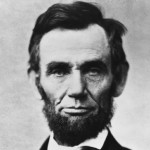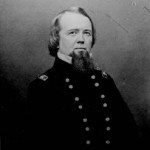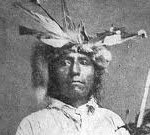 President Abraham Lincoln faced many dilemmas during the early years of the Civil War. The last problem that Lincoln needed at this crucial time was a Dakota Indian uprising in Minnesota.
President Abraham Lincoln faced many dilemmas during the early years of the Civil War. The last problem that Lincoln needed at this crucial time was a Dakota Indian uprising in Minnesota.
It began in August of 1862 along the Minnesota River and was commonly known as the Dakota War of 1862. The Federal Indian Agents of the area were corrupt, self-serving and were not providing annuity and food allotments to the Dakotas, lining their own pockets with the wealth promised to the natives. The bureau of Indian Affairs absconded with much of the payments due the residents of the reservation. Dakotas were starving and freezing on the allotted land adjacent to the river. United States treaties of the 1850’s had guaranteed these bands subsistence and gold if they would stay within the bounds of the reservation. The United States Government was strapped for cash and preoccupied with the cost of the War in the East. One Indian Agent when pressed by the Dakota for food stated, “let them eat grass.” After the hostilities commenced he was found scalped, with his mouth stuffed with grass.
 In order to end the uprising, President Lincoln dispatched General John Pope and additional troops to join the local militias in Minnesota. Pope stated;
In order to end the uprising, President Lincoln dispatched General John Pope and additional troops to join the local militias in Minnesota. Pope stated;
“It is my purpose to utterly exterminate the Sioux, to shoot and hang as many as possible and then remove the rest from the land. The horrible massacres of women and children and the outrageous abuse of female prisoners, still alive, call for punishment far beyond human power to inflict. It is my purpose utterly to exterminate the Sioux if I have the power to do so… They are to be treated as maniacs and wild beasts.”
Before the conflict ended more than 800 residents of Minnesota had been killed and thousands of residents had fled the state. In December of 1862 most of the Dakota bands had surrendered and over 1,000 were held in custody, awaiting trial. Others fled the state to the territories to the west and Nebraska.
Trials of the Dakotas commenced in November of 1862 and Military Tribunals convicted 303 detainees of rape and murder and were order to be hanged. The natives received no legal defense and due to the language barrier, most did not understand the proceedings or the sentences.
 Lincoln had the final say on all death verdicts and requested the names and charges against the 303 defendants. The President reviewed all the testimony and evidence, concluding that 39 of the condemned would be executed. One of the 39 was reprieved at the last moment. President Lincoln stated regarding his decision;
Lincoln had the final say on all death verdicts and requested the names and charges against the 303 defendants. The President reviewed all the testimony and evidence, concluding that 39 of the condemned would be executed. One of the 39 was reprieved at the last moment. President Lincoln stated regarding his decision;
“Anxious to not act with so much clemency as to encourage another outbreak on the one hand, nor with so much severity as to be real cruelty on the other, I caused a careful examination of the records of trials to be made, in view of first ordering the execution of such as had been proved guilty of violating females. Contrary to my expectations, only two of this class were found. I then directed a further examination, and a classification of all who were proven to have participated in massacres, as distinguished from participation in battles.”
The largest mass execution in the history of the United States took place in Mankato, Minnesota on December 26, 1862 when all 38 Dakotas were hung on the same scaffold.
The remaining Dakotas were confined until May of 1863 when they were relocated to reservations in the Dakota Territory. A bounty of $25 was placed on the scalp of any Dakota discovered within the boundaries of Minnesota.
Bummer

